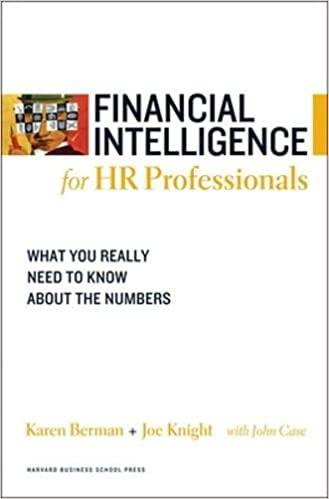Answered step by step
Verified Expert Solution
Question
1 Approved Answer
General Concepts related to Time Value of Money Q1. An investment group purchased a property in 1995 for $300,000 and sold it for $900,000 in
General Concepts related to Time Value of Money
Q1. An investment group purchased a property in 1995 for $300,000 and sold it for $900,000 in 2002. What is the annualized rate of return on this property?
Q2. The Husky Group achieved 13%, 16%, and 27% in year 2001, 2002, and 2003, respectively. What is the effective annual yield over the three years?
Annuity Calculations (Related to Mortgage Payments)
Q3. A family just signed the sales agreement to purchase a home at the asking price of $625,000. They decided to use their savings as the 10% down payment and finance the remaining with a 30-year FRM mortgage loan at an annual interest rate of 5.875%. What would be the monthly payment? What would be the annual payment if this loan is annually amortized?
Q4. A mortgage company offers borrowers a 4% annual interest rate on the one-year ARM that is amortized for 30 years. The index rate is forecast to be 5% for next year and the margin on this loan is 2%. The annual interest rate adjustment cap is 2%. What is the adjusted interest rate for the second year? What are the monthly payments for year 1 and 2 if $200,000 is borrowed? (Remember to use the balance as the new PV for 2nd year.)
Amortization (Interest, Principal and Balance)
Q5. The mortgage is the same as described in Q4 above. What are the total interest payments and principal payments paid in year 1 and 2? What is the balance at the end of year 2?
Q6. A 30-year FRM loan of $300,000 is issued at an annual interest rate of 6% with monthly amortization. What is the total interest payment and principal payment paid in year 11? What is the balance at the end of year 20?
Q7. What is the monthly payment if the above mortgage in Q6 is not amortized? What if it is partially amortized with a balloon payment or balance of $100,000 at the end of 30 years?
Mortgage Valuation (APR/YTM, expected yield/YTC)
Q8. A 30-year FRM loan of $100,000 is issued at an annual interest rate of 6% with monthly amortization. There are no discount points or underwriting fees charged on this loan. What is the expected yield on this loan at years 1, 5, 10, and 30? What is the APR?
Q9. A 30-year FRM loan of $100,000 is issued at an annual interest rate of 5.50% with monthly amortization. However, the borrower is required to pay 2 discount points. What is the expected yield on this loan at years 1, 5, 10, and 30? What is the APR?
Q10. How do you compare the mortgages characterized in Q8 and Q9?
Q11. What is the expected yield if you hold the ARM in Q4 for only two years?
Refinancing
Q12. A borrower holds a FRM mortgage at the interest rate of 7% with a current balance of $250,000 that will mature in 20 years. With the current low rates, he can obtain a new 20-year FRM loan at 6.125% without any fees or points. Should he refinance? What would be the monthly savings?
Q13. Smith Development Co. contracted a 30-year FRM loan with monthly amortization of $1.5 million at an interest rate of 13% five years ago. John Smith, a partner, just talked to a loan officer and learned that he can refinance the current balance on the loan at interest rate of 12% for a FRM amortized over 25 years. However, he also estimated the total refinancing cost to be $50,000. If Smith Development Co. holds the mortgage debt for 25 more years, would you recommend them to refinance? What if it holds for three years?
Step by Step Solution
There are 3 Steps involved in it
Step: 1

Get Instant Access to Expert-Tailored Solutions
See step-by-step solutions with expert insights and AI powered tools for academic success
Step: 2

Step: 3

Ace Your Homework with AI
Get the answers you need in no time with our AI-driven, step-by-step assistance
Get Started


